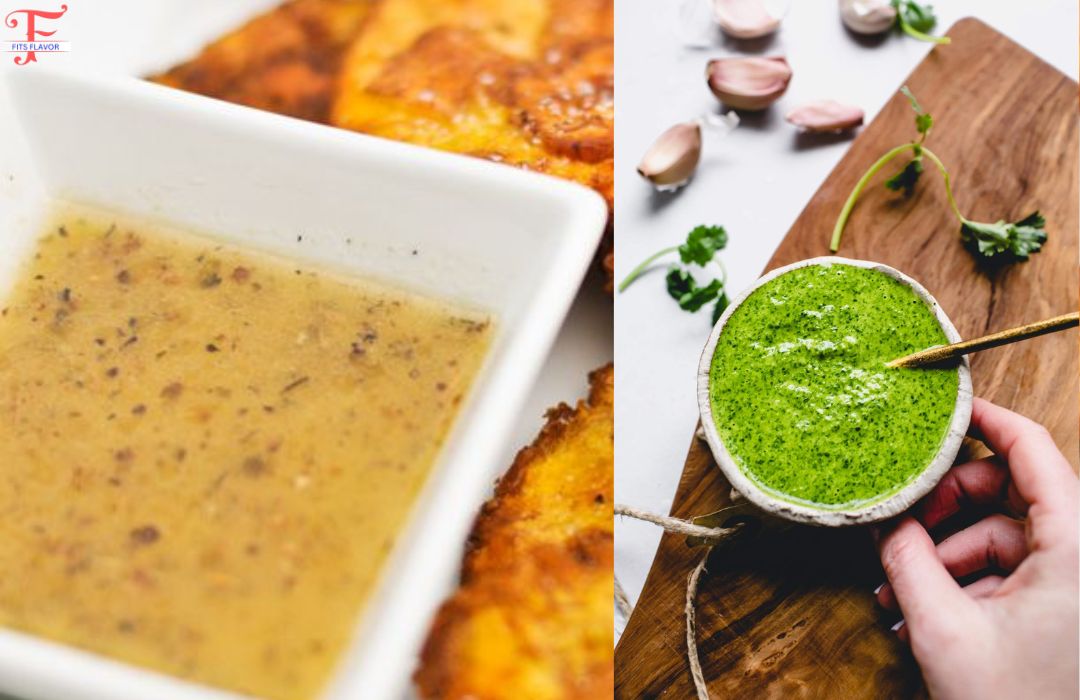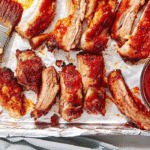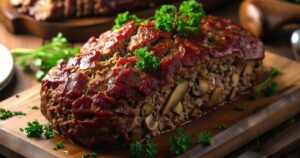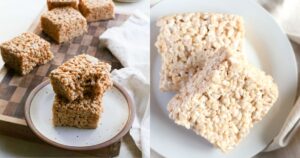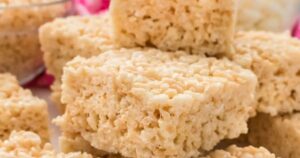I first came across mojo sauce during a visit to the Canary Islands, where a cozy beachside café served it alongside papas arrugadas—those perfectly salty, wrinkled little potatoes.
They brought out two sauces: one a bright, herby green, the other a bold, smoky red. Just one taste, and I was instantly obsessed. Ever since that trip, mojo sauce has had a permanent place in my kitchen.
What is Mojo Sauce Made Of?
Mojo sauce represents a family of citrus-based condiments that originated in the Canary Islands and spread throughout Latin America, particularly Cuba and Puerto Rico.
At its core, this flavorful sauce combines fresh citrus juice, typically from sour oranges or limes, with garlic, olive oil, and various herbs and spices. The base ingredients create a bright, acidic foundation that serves as both a marinade and a finishing sauce.
The traditional recipe varies significantly depending on the region and specific preparation method. Cuban mojo criollo emphasizes sour orange juice and cumin, while Canarian mojo picón incorporates roasted peppers and paprika. Despite these variations, all versions share the common thread of citrus acidity balanced with aromatic elements.
Why You’ll Love This Mojo Sauce
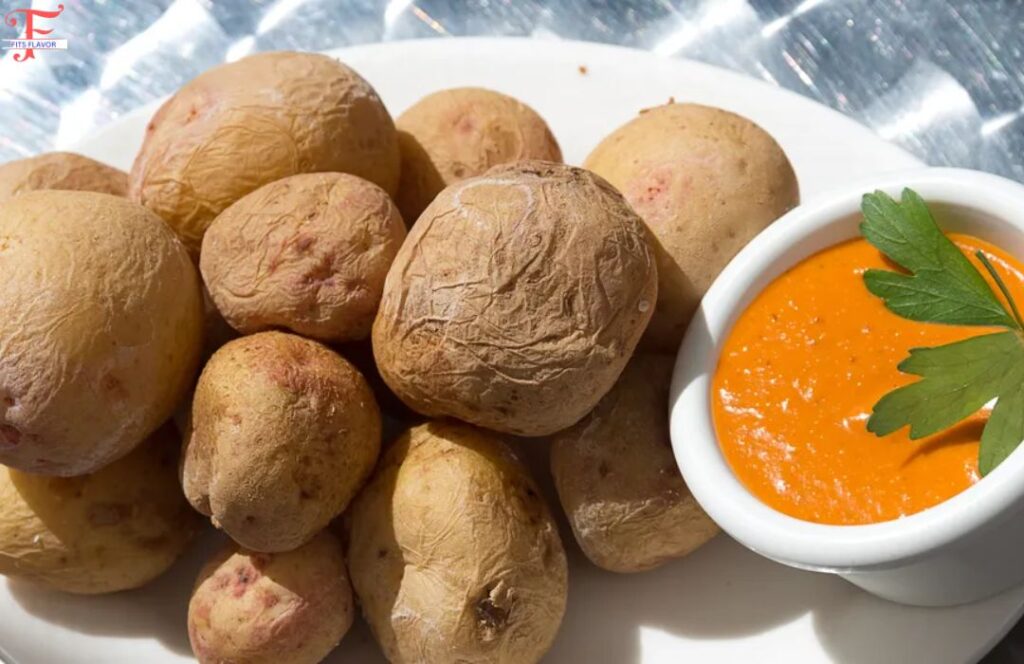
This remarkable condiment offers numerous advantages for home cooks and food enthusiasts. The sauce provides an instant flavor boost to grilled meats, roasted vegetables, and seafood dishes. Its acidic nature makes it an excellent tenderizing marinade, breaking down tough protein fibers while infusing deep, complex flavors.
The versatility of mojo extends beyond traditional applications. Use it as a salad dressing, dipping sauce for bread, or drizzle over rice and beans. The fresh, zesty profile complements both light summer dishes and hearty winter meals, making it a year-round kitchen staple.
Ingredients
Basic Mojo Sauce Components:
- Fresh citrus juice (sour orange, lime, or lemon)
- Garlic cloves, minced
- Extra virgin olive oil
- Ground cumin
- Dried oregano
- Salt and black pepper
- Fresh cilantro or parsley
Optional Flavor Enhancers:
- Red pepper flakes
- Bay leaves
- Onion powder
- Fresh mint
- Roasted red peppers
- Paprika
Equipment Needed
Creating authentic mojo requires minimal kitchen equipment. A sharp knife for mincing garlic and herbs, a citrus juicer for extracting fresh juice, and a mixing bowl for combining ingredients are essential. For optimal results, consider using a mortar and pestle to crush garlic and herbs, releasing their essential oils more effectively.
A whisk or fork helps emulsify the oil and citrus juice, while airtight storage containers preserve the sauce’s freshness. For larger batches, a food processor can streamline the preparation process.
Mise en Place
Proper preparation ensures smooth cooking and optimal flavor development. Begin by washing and drying all fresh herbs. Juice citrus fruits and strain to remove seeds and pulp. Mince garlic finely, allowing it to rest briefly to develop its pungent flavor.
Also Read: 5-Minute PERFECT Wingstop Ranch (Secret Recipe!)
Measure all dry spices and have them ready for incorporation. Room temperature ingredients blend more easily, so remove refrigerated items 30 minutes before preparation. This systematic approach guarantees consistent results and prevents overlooking crucial components.
How to Make Mojo Sauce
Traditional Cuban Mojo:
- Combine minced garlic with salt, creating a paste-like consistency
- Add fresh sour orange juice (or equal parts lime and orange juice)
- Gradually whisk in olive oil until well combined
- Incorporate cumin, oregano, and black pepper
- Add chopped cilantro and adjust seasoning
- Allow flavors to meld for 30 minutes before serving
Cooking Method Variation:
For a mellower flavor, gently heat olive oil in a small saucepan. Add minced garlic and cook until fragrant, about 1 minute. Remove from heat and carefully add citrus juice. The mixture will sizzle and bubble. Stir in remaining ingredients and cool before serving.
How to Make Red Mojo Sauce
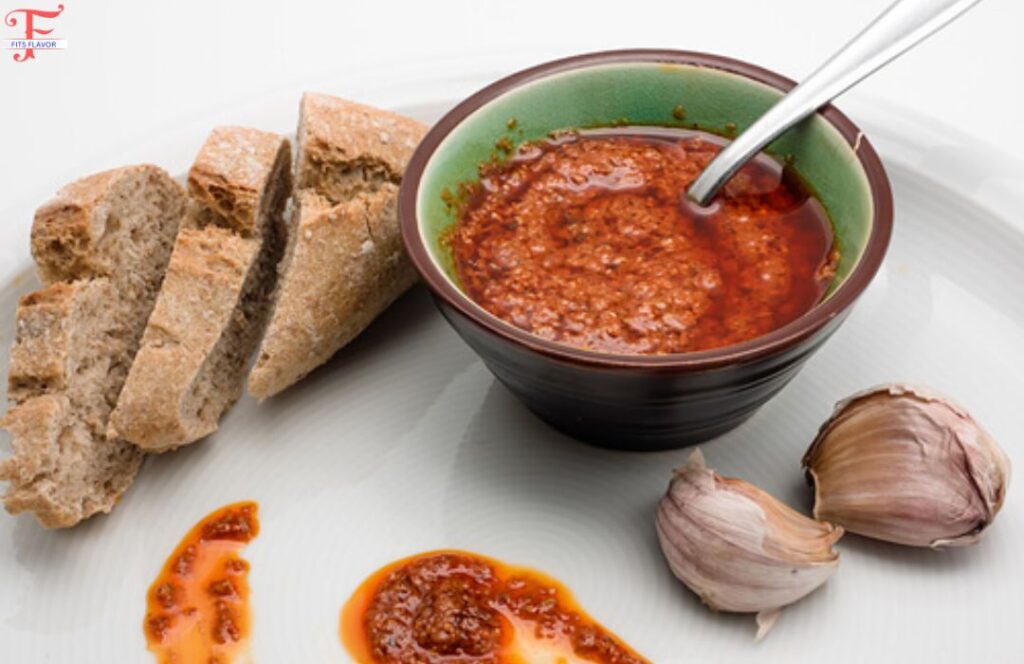
Red mojo sauce incorporates roasted red peppers or paprika for color and smoky depth. Begin with the basic recipe, then add roasted red bell peppers, blended until smooth. Alternatively, substitute regular paprika with smoked paprika for an intensely flavored variation.
This version pairs exceptionally well with grilled meats and roasted vegetables, providing visual appeal alongside robust flavor. The red pepper addition creates a slightly thicker consistency compared to traditional green mojo.
How to Make Green Mojo Sauce
Green mojo emphasizes fresh herbs, particularly cilantro and parsley. This vibrant version features a higher ratio of herbs to citrus, creating a sauce reminiscent of chimichurri. Add fresh mint or basil for additional complexity.
The green variety works wonderfully with seafood and lighter proteins. Its bright, herbaceous character complements spring and summer dishes, while the generous herb content provides beneficial antioxidants and vitamins.
How to Make Cuban Mojo Marinade (Mojo Criollo)
Cuban mojo criollo serves as both marinade and sauce, designed specifically for roasted pork. This version typically includes more citrus juice and longer marinating times. The acid content effectively tenderizes tough cuts while infusing deep, penetrating flavors.
For authentic results, use sour orange juice exclusively. If unavailable, combine equal parts lime juice and sweet orange juice. Marinate pork shoulder or whole chicken for 4-24 hours, depending on size and desired intensity.
What is Mojo Picón?
Mojo picón represents the Canarian Islands’ contribution to the mojo family. This distinctive sauce features roasted red peppers, bread crumbs, and often includes almonds or pine nuts. The addition of bread creates a thicker, more substantial consistency compared to liquid-based versions.
Traditional mojo picón accompanies papas arrugadas (wrinkled potatoes) and grilled fish. The sauce’s rich, complex flavor profile reflects the islands’ strategic position between Africa, Europe, and the Americas, incorporating influences from all three continents.
How to Make Mojo Picón
Creating authentic mojo picón requires roasting red peppers until charred and tender. Remove skins and seeds, then blend with garlic, cumin, and soaked bread. Gradually add olive oil while blending until smooth. Season with salt and vinegar to taste.
For variations, substitute almonds for bread or add smoked paprika for deeper flavor. The sauce should have a thick, spreadable consistency that coats ingredients without being too dense.
Mojo Sauce Recipe Tips & Tricks
Success with mojo depends on ingredient quality and technique. Use the freshest citrus juice possible, preferably squeezed within hours of serving. Fresh garlic provides superior flavor compared to pre-minced alternatives.
Balance acidity with fat content by adjusting oil quantities. For lighter applications, reduce olive oil and increase citrus juice. Conversely, oil-heavy versions work better as marinades for tougher proteins.
Temperature affects flavor development. Warm ingredients blend more readily, while cold service preserves bright, fresh notes. Taste and adjust seasonings frequently, as citrus intensity varies significantly between fruits.
Is Mojo Sauce Spicy?
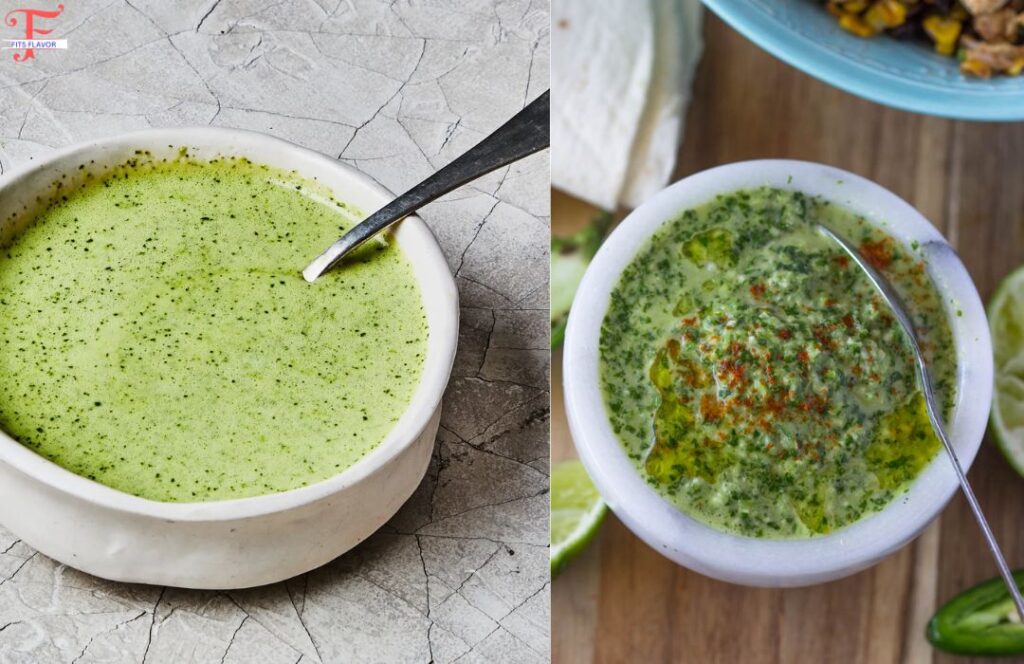
Traditional mojo sauce exhibits minimal heat, focusing instead on citrus brightness and aromatic herbs. However, regional variations and personal preferences often incorporate spicy elements. Add jalapeños, serrano peppers, or red pepper flakes for heat without overwhelming the sauce’s fundamental character.
The spice level remains easily customizable. Start with small amounts and gradually increase to achieve desired intensity. Remember that marinated foods absorb heat over time, so initially mild sauces may develop more pronounced spiciness.
Marinating Times for Meat
Proper marinating times ensure optimal flavor penetration without over-tenderizing proteins. Fish and seafood require 30 minutes to 2 hours maximum, as extended exposure to acid can create mushy textures. Chicken benefits from 2-8 hours of marinating, while tougher cuts like pork shoulder can handle 8-24 hours.
Always marinate in refrigerated conditions and use non-reactive containers. Glass or food-grade plastic prevents metallic flavors that can develop with aluminum or copper surfaces.
What to Serve with Mojo Sauce
Mojo sauce enhances numerous dishes across various cuisines. Classic pairings include roasted pork, grilled chicken, and fried plantains. The sauce also complements rice and beans, yuca, and roasted vegetables.
Contemporary applications extend to grilled fish, shrimp, and even vegetarian proteins like tofu or tempeh. Use as a salad dressing, sandwich spread, or dipping sauce for crusty bread. The possibilities remain virtually limitless.
Storage and Shelf Life
Properly stored mojo sauce maintains quality for 3-5 days refrigerated in airtight containers. The high acid content provides natural preservation, though fresh herb components may deteriorate first. For longer storage, freeze in ice cube trays for convenient portion control.
Separation occurs naturally during storage. Simply stir before use to recombine ingredients. Taste and adjust seasonings as needed, as flavors may mellow or intensify over time.
Frequently Asked Questions
Can I make mojo sauce without sour oranges?
Absolutely! Substitute equal parts lime juice and sweet orange juice for authentic flavor. Some cooks prefer using only lime juice for a more intense citrus profile.
How long does homemade mojo sauce last?
Refrigerated mojo sauce stays fresh for 3-5 days in airtight containers. Freezing extends shelf life to 3 months, though texture may change slightly upon thawing.
What’s the difference between mojo and chimichurri?
While both are herb-based sauces, mojo emphasizes citrus acidity and often includes cumin, while chimichurri features vinegar and focuses on parsley and oregano combinations.
Can I use dried herbs instead of fresh?
Fresh herbs provide superior flavor and texture, but dried herbs work in a pinch. Use one-third the amount of dried herbs compared to fresh specifications.
Is mojo sauce gluten-free?
Traditional mojo sauce contains no gluten ingredients. However, always check specific recipes, as some variations like mojo picón may include bread crumbs containing gluten.

I’m Michael Alexander. A content writer and SEO Expert with 2 years of Experience. I have already worked with the BBC News Website.
